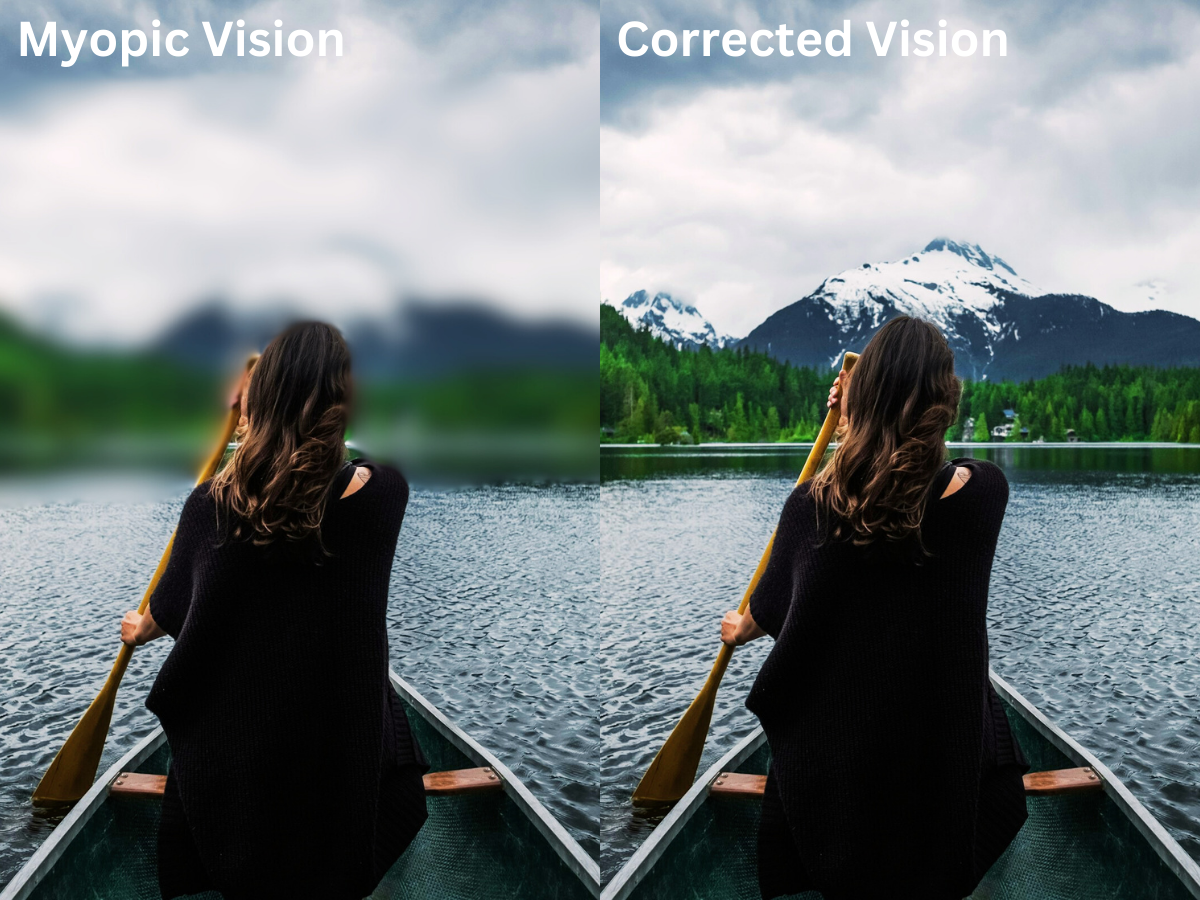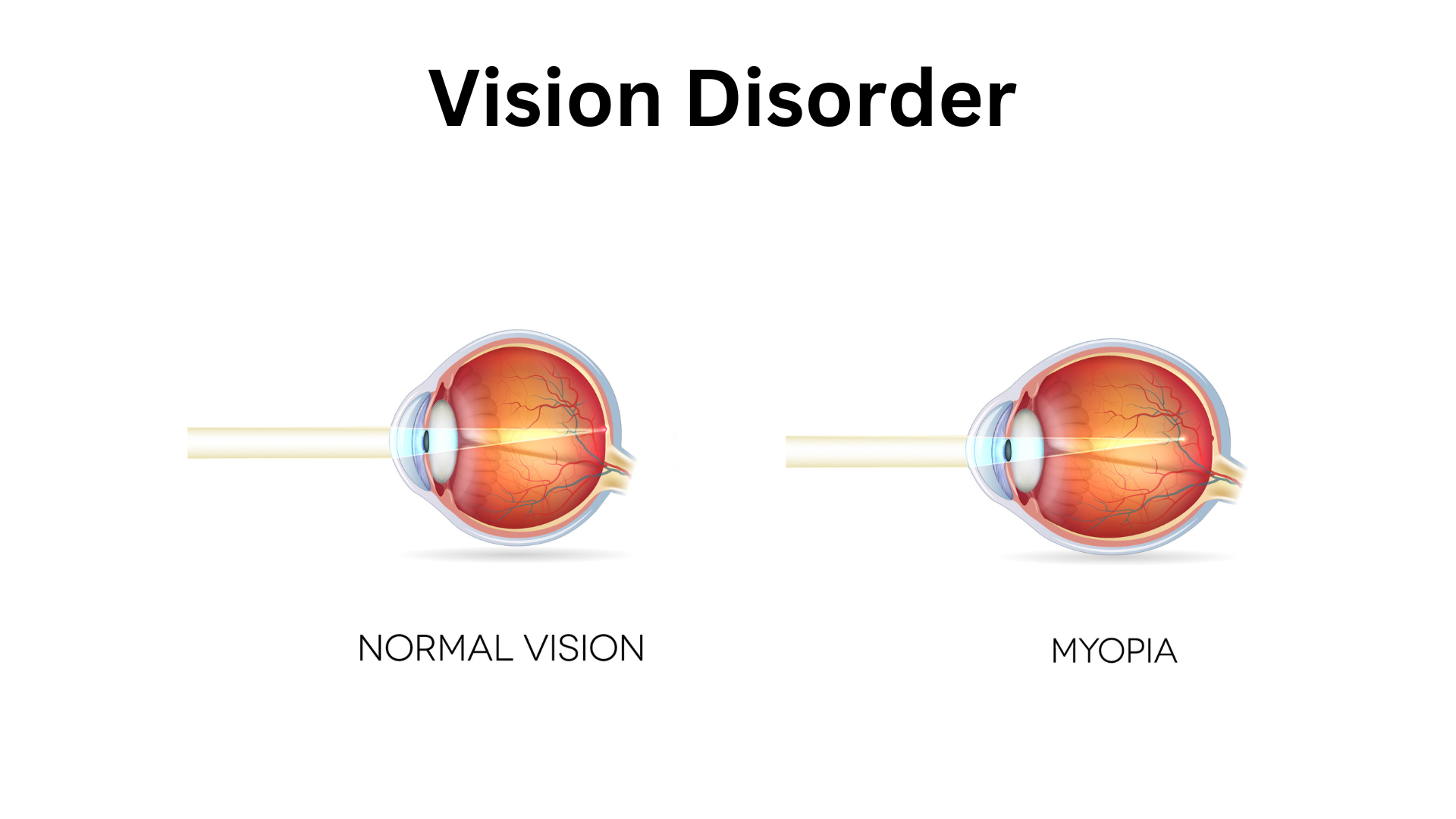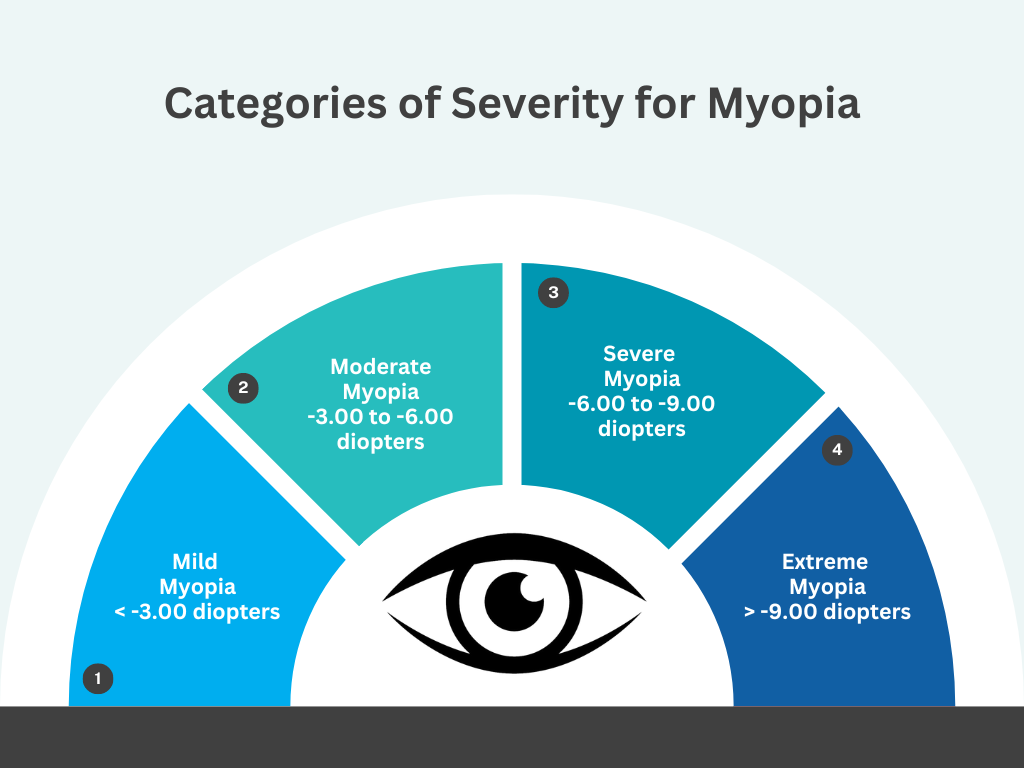What is Myopia?
Myopia, commonly referred to as nearsightedness, is a prevalent visual condition that impedes the ability to see distant objects clearly. Individuals with myopia can effortlessly focus on nearby objects, while distant objects appear blurred or hazy. This prevalent eye disorder is frequently diagnosed during childhood and can progress over time.
Understanding Myopia: Causes and Risk Factors
The primary cause of myopia lies in the way light rays converge within the eye. In an eye with normal vision, incoming light rays focus precisely on the retina, the light-sensitive layer at the back of the eye. Conversely, in a myopic eye, the eyeball is either elongated or the cornea, the clear dome-shaped structure at the front of the eye, is too curved. This abnormality causes light rays to converge in front of the retina, resulting in blurred distant vision.
Several factors can contribute to the development of myopia, including:
- Genetics: Myopia often runs in families, suggesting a hereditary predisposition.
- Environmental factors: Extensive near work, such as reading or using electronic devices for prolonged periods, may contribute to the onset or progression of myopia.
- Ethnicity: Studies suggest a higher prevalence of myopia in certain ethnicities, including East Asians and Hispanics.


Normal Vision:
Clear vision is dependent on light rays converging precisely on the retina, a light-sensitive membrane at the back of the eye. The optical system of a normal eye, comprising the cornea, crystalline lens, and vitreous body, orchestrates this precise convergence, ensuring that objects are projected sharply onto the retina. This intricate process of light ray redirection is known as refraction. The total refraction of the eye is measured in diopters (D), representing the optical power of the cornea, lens, and vitreous body. When the total refractive power of the eye is zero diopters, objects are focused flawlessly on the retina, resulting in sharp, undistorted vision.
Myopia (Nearsightedness):
Nearsightedness, also known as myopia, typically stems from an elongated eyeball, causing the light rays to converge too soon, in front of the retina instead of directly upon it. This refractive error results in blurred vision for distant objects. The severity of nearsightedness determines the distance at which objects appear clear. Individuals with severe myopia may only perceive distant objects clearly up to a few inches away, while those with mild myopia may be able to focus on and see distant objects clearly from several yards. Optical correction for nearsightedness aims to reduce the overall refractive power of the eye, effectively shifting the focal point back onto the retina.
Symptoms and Diagnosis of Myopia
The most evident symptom of myopia is the inability to see distant objects clearly. Individuals with myopia may squint to attempt to improve their vision and may experience headaches or eye strain, particularly after engaging in activities that require sustained near vision, such as reading or using digital devices.
A comprehensive eye examination conducted by an ophthalmologist, a medical doctor specializing in eye care, is essential for diagnosing myopia. The examination typically includes a visual acuity test, which measures the ability to see at various distances, and an eye refraction test, which assesses the focusing power of the eye.

Effective Management Strategies for Myopia
While there is no permanent cure for myopia, various treatment options can effectively manage the condition and improve vision which include LASIK or PRK.
The optimal treatment approach for myopia is determined by individual factors, such as the severity of the condition, age, and lifestyle considerations. Consulting with an ophthalmologist is crucial to determine the most suitable treatment option for each individual case.
Additional Considerations for Myopia Management
In addition to treatment options, several lifestyle modifications can be beneficial for individuals with myopia:
- Regular eye examinations: Scheduling regular eye exams with an ophthalmologist is essential to monitor the progression of myopia and detect any potential eye health concerns.
- Maintaining good posture: Maintaining proper posture, particularly while reading or using electronic devices, can help reduce eye strain.
- Taking breaks from near work: Regularly taking breaks from activities that require sustained near vision, such as reading or using digital devices, can help alleviate eye strain.
- Engaging in outdoor activities: Spending time outdoors may help reduce the risk of myopia progression, particularly in children.
By understanding the causes, symptoms, and management strategies for myopia, individuals can effectively address this prevalent vision condition and maintain optimal visual health.
Source:
Nearsightedness: What Is Myopia? (2024, January 17). American Academy of Ophthalmology. https://www.aao.org/eye-health/diseases/myopia-nearsightedness